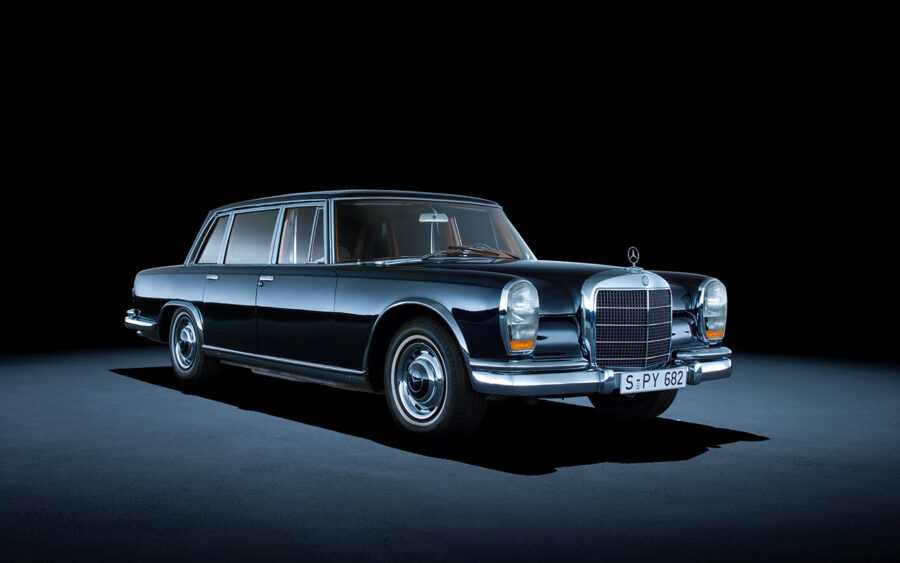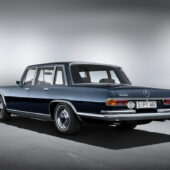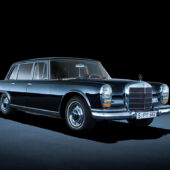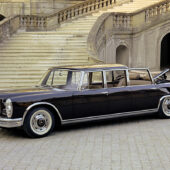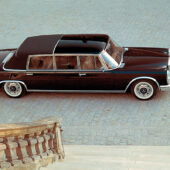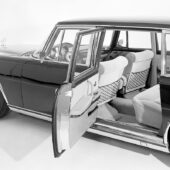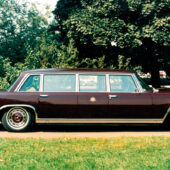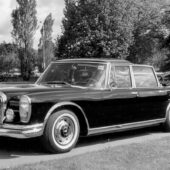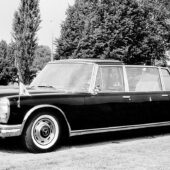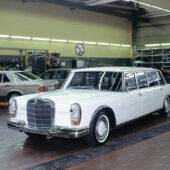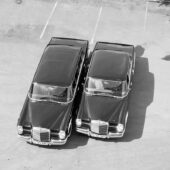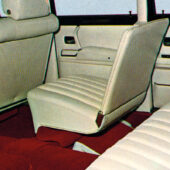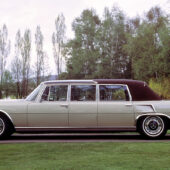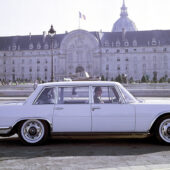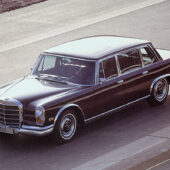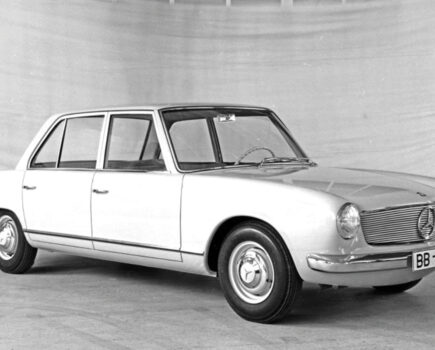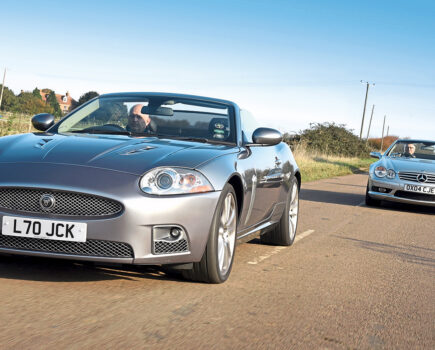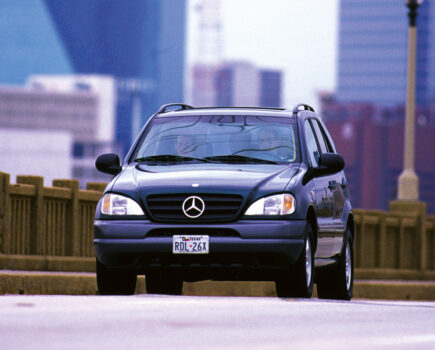Handsome, imposing and beloved by celebrities and dictators alike, the W100 is a bona fide classic. Here’s the full story
Words: Andrew Roberts Images: Mercedes-Benz
As a film, The Magic Christian was somewhat of a curio, a tail-end Swinging London vehicle for Peter Sellers, with several intriguing cars on display – a Checker Aerobus, a police Jaguar S-Type and a 1965 Mercedes-Benz 600 Pullman. The last named was allegedly the property of one Richard Starkey, aka the film’s co-lead Ringo Starr, and it dominated every moment of its screen time, existing in another world from the Morris LD GPO vans, Austin 1100s and other mundane vehicles.
Cinema is a logical starting point when discussing the 600 as for many Britons it is a form of Mercedes-Benz that you are more likely to encounter on the screen than in the car park of Sainsburys. From On Her Majesty’s Secret Service to The Witches of Eastwick, the W100 was guaranteed to exuding pomp and circumstance and, quite frequently, menace while you might also glimpse it in news bulletins concerning the great, the good and the notorious. The 600 made its debut in late1963and when it ceased production in June 1981 after 2,677 units it was associated with Leonid Brezhnev, Idi Amin, Enver Hoxha (the world’s most notorious Norman Wisdom fan) and Chairman Mao. Owners of a less ghastly nature included George Harrison, John Lennon, Elvis Presley and Elizabeth Taylor.
Thus, it is wholly understandable why visitors to the 1963 Frankfurt Motor Show were mesmerised by the 600. Imagine if you had arrived in your second-hand VW Beetle with its six-volt electrical system and then saw a car that Daimler-Benz intended to take up their ‘pre-war tradition of the company which was to have at least one model which would be included whenever ultra-prestige cars were considered’. This was the automotive embodiment of the German economic miracle, one with the new 6.3 litre SOHC Bosch mechanical fuel-injected V8 engine powering nearly 2 ½ tons of Mercedes-Benz to a top speed of 125 mph.
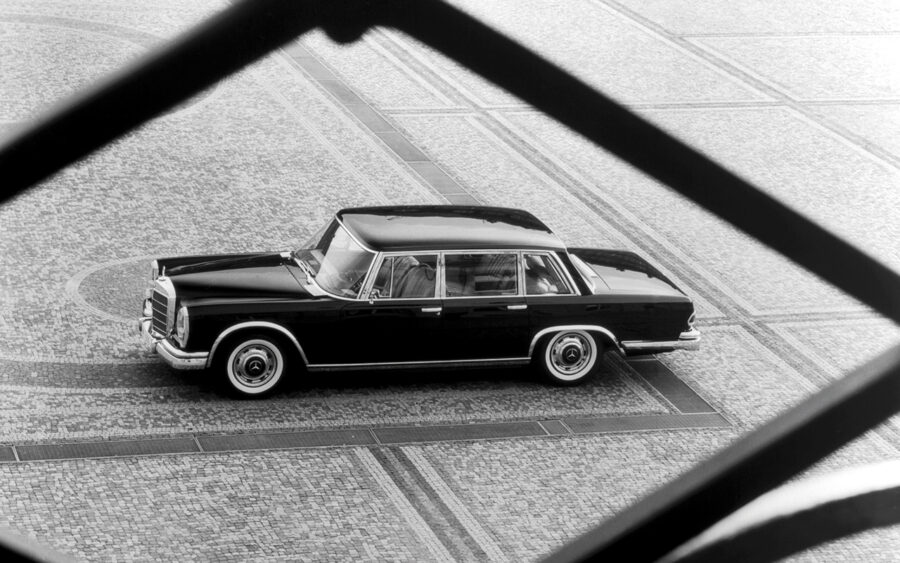
Such was the impact of the W100 that certain chaps at Rolls-Royce were allegedly heard to mutter that its technology was ‘doomed to fail’ in comparison with the Silver Cloud’s redoubtable drum brakes and separate chassis. If PAS and automatic transmission as standard equipment were now par for the course for such a car in the early 1960s, the all-disc braking with separate circuits and the self-levelling air suspension that allowed the 600 to be elevated over poorly surfaced roads was definitely not.
Then there was the hydraulic operation of the adjustment of the front and rear seats, door locks, boot lid, fuel filler cap and side-windows plus shock absorbers that could be controlled by the driver. Above all, this was a very large motor car; neither the 1957- 1962 W189 300d nor the W112 300SE were exactly lightweights but the W100 looked as neo-brutalists as a new office block. There was no deliberate harking back to a mythical “heritage” with the 600; Daimler-Benz claimed, with a refreshing lack of false modesty, that their new flagship’s ‘refinement, advanced design, safety and extraordinary comfort have no equal’.
Full production commended in September 1964 with a long list of models to suit your pocket, personal needs, ego or how many of your loyal subjects had the desire to take a pot shot at you. The 3,200mm wheelbase saloon was available with or without an electrically operated division and was aimed at the magnate who wished to take the wheel on a regular basis.

For those times when the chauffeur returned to duty, there were curtains on the rear screen for extra privacy, but the owner would be depriving his or herself of an unforgettable le experience. After all, who could resist driving a Mercedes-Benz that was “Peerless in performance”, the publicity also reassuring the well-heeled motorist that “this noble car incorporates every conceivable feature important to passenger comfort and safety”.
The great John Vary Bolster of Motor Sport magazine tested a saloon in November 1965 and his report was studded with such phrases as “the ultimate in luxury motoring” and “What is even more impressive is the handling and braking of this 2.5-ton car. Both are out of this world”. He concluded that “If you invest your money thus you will own the most advanced motor-car in the world, a splendid example of Daimler-Benz engineering at its highest pinnacle”. Of course, with a UK list price of £8,926 (or more than 17 times the price of a Mini), the 600 was very much a car in the Beatles/Sellers class although Bolster reported that there were already 30 in the country.
Across the Pond Road & Track evaluated the short wheelbase W100 and pointed out that for $20,500 “you could get a Lincoln Continental, a Buick Riviera, two Pontiac GTOs and still have enough change left over for two and a half or three Volkswagens”. As for its dimensions, “because the mind’s eye is not accustomed to such grand dimensions, it takes a while to encompass it in the mind … like a statue that is larger than life. Or a cathedral”. And indeed, the W100 was imposing but never grandiose in the manner of certain Cadillacs and Lincolns while anyone who was in need of even more formal transport was offered the 3,900mm wheelbase seven-seater Pullman. This, to quote the brochure, could be specified with:
“a choice of either four doors with two backward-facing seats in the rear, or six doors with two forward-facing folding seats in the rear. The two latter choices are offered principally to meet the needs of heads of state, industry and other people of eminence having considerable public responsibilities.”

It’s no wonder the car cost £9,994 in the UK. Even more exclusive, if that were possible, was the Laundette, which was available in various configurations of doors and hood length. As Daimler-Benz themselves have noted, it is probably impossible to find two identical 600s, such was the myriad of body styles and special equipment options from the sliding roof to a Becker radio, with upholstery in cloth, velour, Bedford cord or leather.
1965 saw the construction of three unique W100s. A two-door SWB Coupe was evaluated by Daimler-Benz but was not to enter production – it survives in private hands – and Sindelfingen constructed an armoured 600 Pullman with an extended roof. This was the company’s first post-war bulletproof vehicle and was s loaned by Daimler-Benz to various governments and that year also saw the one of their most famous – indeed genuinely iconic – of all Mercedes-Benz models.
The four-door Laundette registration that was made for Pope Paul VI had a raised floor at the rear, modified back doors and a roof that was extended by nearly three inches. The W100 bearing the registration SV1 (“Stato della Città del Vaticano”) was seen in countless newsreels around the world and was used by the Vatican for the next two decades. Today it resides in the company’s museum).
The last W100 left the factory when the Mercedes-Benz W126 and especially the W123 were dominating the roads of Europe yet it could not be said to look anachronistic. A 600 was, and is, a motor-car above mere fashion. Perhaps the best summary of the 600’s impact on automotive design is perhaps best encapsulated by the conclusion of that Road & Track test of 53 years ago:
“Every automobile is essentially a specialized machine designed to perform a specific function. All succeed or fail in direct relationship to how well they fulfil this function and must be evaluated in light of these standards. By these criteria, the 600 scores very high. The Mercedes 600 comes close to fulfilling its role with perfection, perhaps closer than any other car we have ever tested.”
That is why the W100 will be remembered for generations to come; it was a vehicle whose ethos was that a truly prestigious car is one of the utmost integrity. Small wonder that even when glimpsed in a semi-forgotten 1969 comedy, the Mercedes-Benz 600 mesmerised – and continues to do so.

